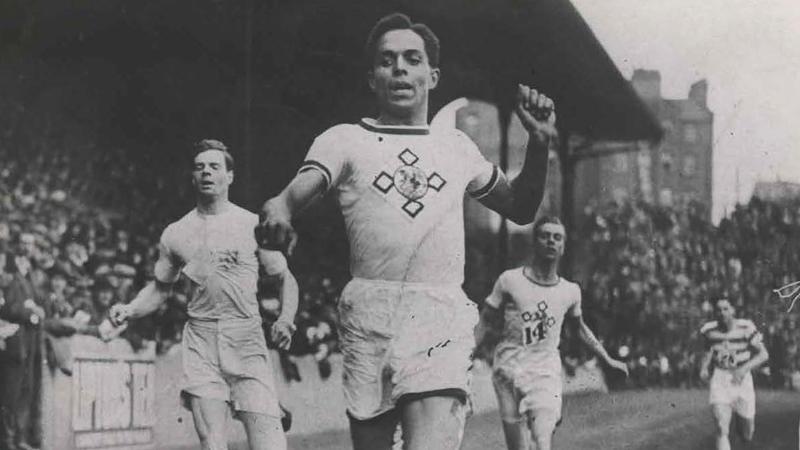To mark the opening of the Tokyo 2020 Olympic Games, the University of Westminster has revealed a new lightbox to commemorate Harry Edward, an Olympian who was part of the Polytechnic Harriers Athletic Club at Westminster’s predecessor Regent Street Polytechnic.

The Polytechnic Harriers Athletic Club at Regent Street Polytechnic had both an education arm and a sporting and social arm, which was established in 1882 and hosted an array of exceptional athletes including Harry Edward. The Club’s history has rich connections to the Olympic Games of the 20th century, and the achievements of Harriers’s Olympians were key to the Club’s success and high-profile status.
A lightbox to commemorate Harry Edward has been placed in Regent Street foyer on the ‘third plinth’, following Westminster’s previous celebration of Mary Lines on the 100th anniversary of the first Woman’s Olympiad and the Writing Between the Lines project.
Born in Berlin in 1895, Harry Edward immigrated to London after World War I and taught French and German at Pitman’s School of Business and Civil Service Training. While in London, he joined the Polytechnic Harriers Athletic Club and began his career as a track and field athlete.
In the 1920 Olympic Games in Antwerp, Edward ran for Great Britain and won bronze medals in the 100 and 200-metre sprints. In 1921, he received the Harvey Memorial Gold Cup as the best champion of the year in London, and won three Amateur Athletic Association championships in 1922 in the 100, 220 and 440-yard dashes, receiving personal congratulations from King George V.
In 1923, he decided to try his fortune in the United States and participated in the Wilco Games at Yankee Stadium in New York, as well as taking part in athletic events that the New York and Boston Athletic Clubs sponsored. Following his athletic career, Edward later committed his time to humanitarian and civil rights causes and worked as a United Nations relief worker.
Harry Edward is one of many successful athletes to come from The Polytechnic Harriers, who had over 800 members at their peak. He is one of the four athletes of the Club who became key parts of the University’s and indeed British history, alongside Arthur Wint, John E London and Emmanuel McDonald Bailey.
Talking about the new lightbox, Guy Osborn, Director of the Centre for Law, Society and Popular Culture and organiser of the project, said: “The Harry Edward lightbox follows on from our celebration of Mary Lines and our brilliant female Olympic athletes. Harry Edward was an amazing man – our first Black Olympian and an all-round heroic figure, and more than worth of being commemorated on our third plinth. We are aiming to continue to recognise these and other lost Westminster icons in various ways.”
Find out more about the life of Harry Edward on the University of Westminster Archive website.


